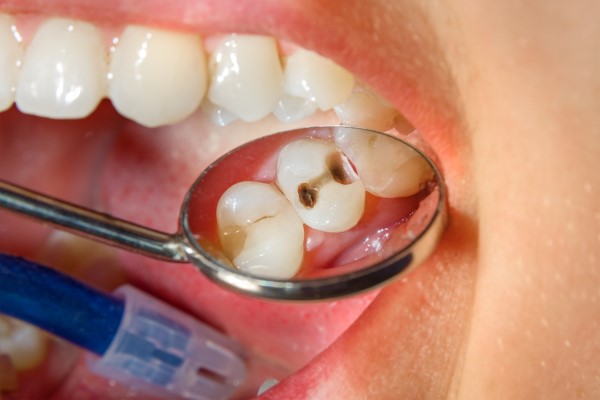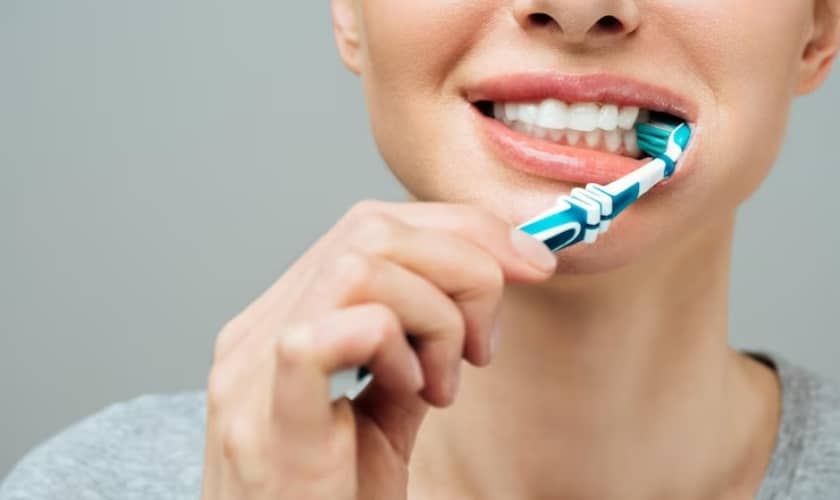The Silent Sneak: Unveiling the Timeline of Cavity Formation
Cavities, also known as dental caries, are a common dental problem affecting people of all ages. They occur when tooth enamel, the hard outer layer of your teeth, breaks down due to acid produced by plaque bacteria. This breakdown creates tiny holes in the tooth, leading to sensitivity, pain, and potential tooth loss if left untreated. Understanding the timeframe of cavity formation is crucial for prioritizing preventative measures and maintaining good oral health.
The Battle Within: The Science Behind Cavity Development
Cavity formation is a gradual process that unfolds in stages:
- Plaque Buildup: When you consume sugary or starchy foods, bacteria in your mouth feed on these particles and produce acid as a byproduct. This acid plaque clings to the teeth.
- Demineralization: Acidic plaque weakens tooth enamel by dissolving essential minerals like calcium and phosphate. This initial demineralization doesn’t cause a cavity yet, but it softens the enamel.
- Remineralization: Saliva naturally contains minerals that can strengthen and repair weakened tooth enamel if plaque is removed promptly. Fluoride, from toothpaste or other sources, can also aid in remineralization.
- Dentin Cavitation: If demineralization isn’t countered by remineralization, it progresses into the dentin layer beneath the enamel. Dentin is softer than enamel and more susceptible to decay, causing the cavity to become deeper.
- Pulp Cavitation: In the most advanced stage, the decay reaches the pulp, the innermost part of the tooth containing nerves and blood vessels. This can cause significant pain and requires prompt dental intervention.
The Time is Now: Unveiling the Cavity Formation Timeline
The timeframe for cavity formation can vary significantly depending on several factors:
- Oral Hygiene Habits: Regular brushing and flossing remove plaque, preventing acid attacks on tooth enamel. Poor oral hygiene practices accelerate cavity development.
- Diet: Frequent consumption of sugary or starchy foods provides a constant fuel source for plaque bacteria, speeding up the demineralization process.
- Saliva Flow: Saliva plays a vital role in washing away food debris and neutralizing acid. Reduced saliva flow can create a more cavity-prone environment.
- Fluoride Exposure: Fluoride strengthens tooth enamel and promotes remineralization. Adequate fluoride intake through toothpaste, water fluoridation, or supplements can help prevent cavities.
- Dental Anatomy: Some people have deeper pits and grooves on their teeth, which can trap plaque more easily and increase cavity risk.
On average, it can take anywhere from six months to several years for a cavity to progress from the initial demineralization stage to a noticeable cavity requiring a filling. However, this is a loose estimate, and cavities can develop much faster in some individuals.
The Power of Prevention: Safeguarding Your Smile
By adopting healthy oral hygiene practices, you can significantly reduce your risk of cavities:
- Brushing: Brush your teeth twice a day for two minutes each time, using a soft-bristled toothbrush and fluoride toothpaste.
- Flossing: Floss daily to remove plaque and food particles from between teeth.
- Balanced Diet: Limit sugary and starchy foods and drinks, and opt for a healthy diet rich in fruits, vegetables, and whole grains.
- Regular Dental Checkups: Schedule regular dental checkups and cleanings, typically every six months, for professional plaque removal and early cavity detection.
- Fluoride Therapy: Discuss fluoride supplements or topical fluoride applications with your dentist, especially if you are at high risk of cavities.
Knowledge is Power: Frequently Asked Questions About Cavity Formation
Q: How can I tell if I have a cavity?
A: Early cavities might not cause any symptoms. However, you might experience toothache, sensitivity to hot or cold, or visible dark spots on your teeth. Regular dental checkups are crucial for early cavity detection.
Q: Does brushing after every meal prevent cavities?
A: Brushing twice a day with fluoride toothpaste is the recommended minimum. While brushing after meals can be beneficial, it’s important to wait at least 30 minutes after eating to avoid damaging softened enamel.
Q: Are artificial sweeteners safe for my teeth?
A: Artificial sweeteners generally don’t cause cavities themselves. However, they might be present in sugary candies or processed foods that can contribute to cavities.
Q: How long do fillings last?
A: Dental fillings can last for many years with proper care. However, they can eventually chip, crack, or wear out, necessitating replacement.
Beyond Prevention: Treatment Options for Existing Cavities
While prevention is key, cavities can sometimes develop despite good oral hygiene habits. If you have a cavity, various treatment options are available to restore your tooth health and prevent further decay. Here’s an exploration of common cavity treatment methods:
-
Dental Fillings: This is the most common treatment for cavities. The dentist removes the decayed portion of the tooth and fills the cavity with a biocompatible material, such as composite resin, amalgam (silver fillings), or glass ionomer cement. The type of filling material chosen depends on factors like the severity of the cavity, location, and aesthetics.
-
Dental Crowns: For large or severely damaged cavities, a dental crown might be necessary. A crown is a cap that completely covers the visible portion of the tooth, restoring its strength, shape, and size. Crowns are typically made from porcelain or ceramic and offer a more durable and aesthetically pleasing solution compared to fillings.
-
Inlays and Onlays: These are custom-made fillings used for moderate-sized cavities, often on the chewing surface of the tooth. Inlays fit within the cusps (raised points) of the tooth, while onlays extend over one or more cusps. Inlays and onlays are typically made from strong, tooth-colored materials like porcelain or composite resin.
-
Root Canals: In advanced cases where decay reaches the pulp, a root canal becomes necessary. This procedure removes the infected pulp tissue, cleans the root canals, and seals the tooth to prevent further infection. A crown is usually placed on the tooth after a root canal to restore its function and strength.
Choosing the Right Treatment:
The best treatment for your cavity will depend on the severity of the decay, location of the cavity, size of the cavity, and your individual needs. Your dentist will perform a thorough examination, discuss your options, and recommend the most suitable treatment plan for your specific case.
Living with Fillings and Crowns: Maintaining Oral Health After Treatment
Even after receiving a cavity treatment, maintaining good oral hygiene practices is crucial for the longevity of the fillings or crowns and your overall oral health:
- Brushing and Flossing: Continue brushing twice a day and flossing daily to remove plaque and prevent recurrent decay around the restored tooth.
- Regular Dental Checkups: Schedule regular dental checkups for professional cleaning and monitoring of your fillings or crowns.
- Dietary Habits: Limit sugary and starchy foods that can contribute to decay around fillings or crowns.
- Bad Habits: Avoid habits like chewing on hard objects or using your teeth for anything other than chewing food, as this can damage your fillings or crowns.
By understanding the treatment options available and prioritizing good oral hygiene practices after treatment, you can ensure the longevity of your dental restorations and maintain a healthy, functional smile.
A Brighter Future: Investing in Your Oral Health
Cavities are a common dental concern, but with proper prevention, early detection, and appropriate treatment, you can maintain good oral health throughout your life. Here are some concluding takeaways:
- Prevention is Key: Prioritize good oral hygiene habits like brushing, flossing, and maintaining a healthy diet to minimize your risk of cavities.
- Regular Checkups are Crucial: Schedule regular dental checkups and cleanings to ensure early detection and treatment of cavities.
- Early Intervention Matters: Addressing cavities early with fillings can prevent the need for more extensive and expensive treatment later.
- Treatment Options Exist: There are various effective treatments available for cavities, depending on the severity of the decay.
By investing in your oral health through preventative measures, regular dental care, and timely treatment of cavities, you can enjoy a lifetime of healthy, confident smiles. Remember, consulting your dentist for personalized guidance and addressing any concerns you might have about cavities is crucial for optimal oral health.




